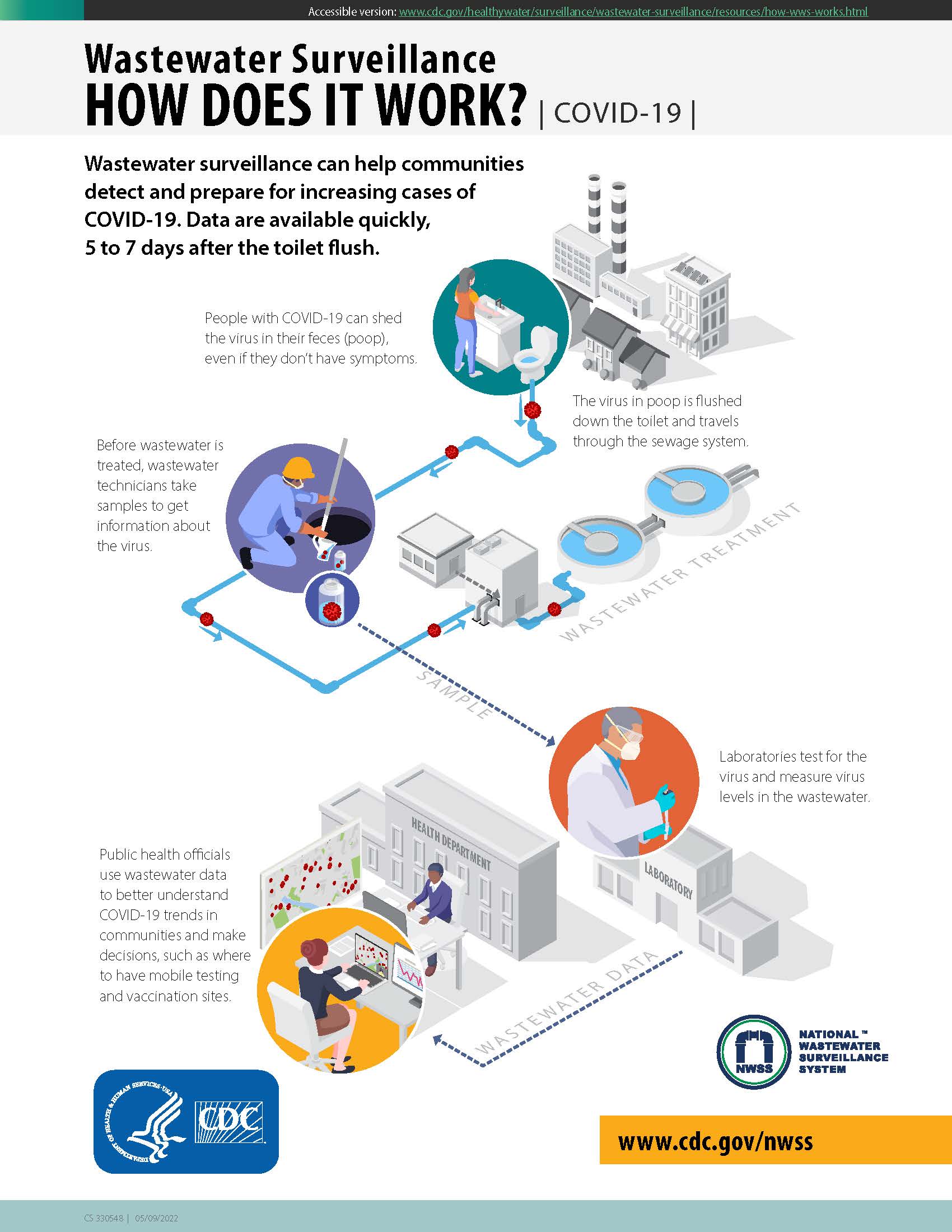Wastewater Surveillance
Wastewater surveillance is an important public health tool to track the spread of diseases in communities. This population-level data provides valuable insights into our communities without collecting person-specific data. This can help local public health agencies identify outbreak trends, direct prevention efforts to where they are most needed, and provide additional insight into disease spread that complements other public health surveillance data.

What You Need to Know
Wastewater, also referred to as sewage, includes water from household or building use (such as toilets, showers, and sinks) that can contain human fecal waste, as well as water from non-household sources (such as rain and industrial use).1
People infected with a disease, such as SARS-CoV-2 can shed the virus in their feces, even if they do not have symptoms. A laboratory tests the wastewater samples to determine how much virus is present and use data collected overtime to visualize disease trends.1
Wastewater surveillance data allows public health departments to visualize disease trends in the community, independent of the health care system, to inform public health decision making for implementing or removing disease mitigation strategies. 1
Wastewater Surveillance in Montana
Active* Sites in Montana Participating in Wastewater Surveillance Testing at of 10/2/2023
- East Helena
- Helena
- Livingston
- Chippewa Cree Tribe, Rocky Boy’s Reservation in Box Elder
- City of Choteau
- Missoula
*Sites that have had a wastewater sample processed in the past 6 months
View the wastewater data here.

